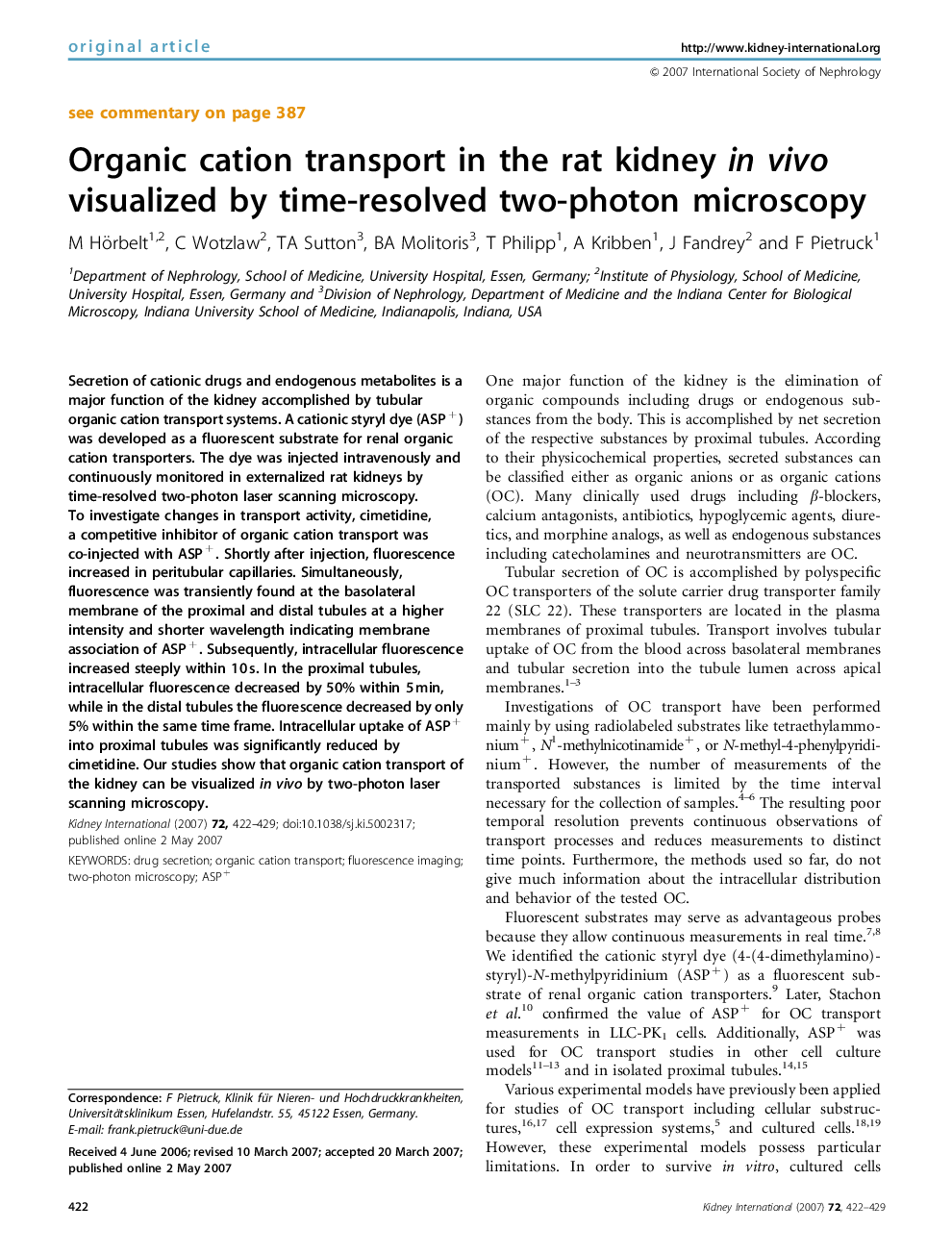| Article ID | Journal | Published Year | Pages | File Type |
|---|---|---|---|---|
| 3885350 | Kidney International | 2007 | 8 Pages |
Secretion of cationic drugs and endogenous metabolites is a major function of the kidney accomplished by tubular organic cation transport systems. A cationic styryl dye (ASP+) was developed as a fluorescent substrate for renal organic cation transporters. The dye was injected intravenously and continuously monitored in externalized rat kidneys by time-resolved two-photon laser scanning microscopy. To investigate changes in transport activity, cimetidine, a competitive inhibitor of organic cation transport was co-injected with ASP+. Shortly after injection, fluorescence increased in peritubular capillaries. Simultaneously, fluorescence was transiently found at the basolateral membrane of the proximal and distal tubules at a higher intensity and shorter wavelength indicating membrane association of ASP+. Subsequently, intracellular fluorescence increased steeply within 10 s. In the proximal tubules, intracellular fluorescence decreased by 50% within 5 min, while in the distal tubules the fluorescence decreased by only 5% within the same time frame. Intracellular uptake of ASP+ into proximal tubules was significantly reduced by cimetidine. Our studies show that organic cation transport of the kidney can be visualized in vivo by two-photon laser scanning microscopy.
